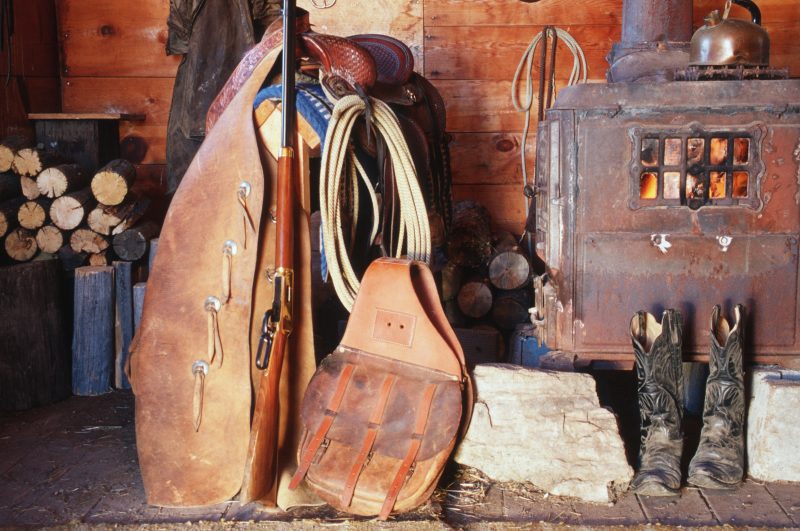Survival on the American Frontier

Life for an American pioneer was far from glamorous. The harsh wilderness of the frontier posed an ongoing challenge as settlers had to make their own houses, food, and even clothing from scratch. The tenacity of their spirit lives on in the legacy of the things they did to survive that harsh reality.

According to Richard W. Slatta, Ph.D., a Professor of History at North Carolina State University, the frontier era began with the west being inhabited mainly by various Native American tribal cultures; by the end, the west had become busy and populated by a variety of new immigrants.
This frontier posed obvious challenges providing food, shelter, and defense for the family. A number of solutions appeared throughout American pioneer history, so let’s take a look at a few of them.
Food and Supplies
The most pressing issue on the American frontier was to work out how people could feed themselves and their families. The pioneers mainly got their food from two sources: hunting and farming.

Most, if not all, families had farms or gardens where they grew a large amount of their own food. The spread of agricultural farming across the frontier was one of the most important factors in the development of America. The harsh and unpredictable climate forced farmers to come up with improved methods for growing and harvesting their crops. Techniques such as dry farming (growing crops without irrigation in dry regions) were pioneered in the era. Plenty of inventors devised tools and ways of tilling the tough prairie soil to allow crops to grow better.

Hunting was also an important focus. Lewis-clark.org notes that the frontier was considered to be a hunter’s paradise, and game was plentiful. Typical prey included buffalo and turkey, and this formed the majority of the meat consumed.

Robert Beverly, a prominent public figure in Virginia, published a list of hunting techniques commonly used in the 18th century. He covered many techniques ranging from fishing to stalking deer.
Of course, preservation was one of the most challenging aspects of staying fed. Using a variety of methods, the pioneers were able to keep their food from spoiling and survive the harsh winters. Drying was a popular method, effective for preserving most vegetables and some meat. Pickling was typically used for a wide range of vegetables while most meat would be preserved with salt or dried in thin strips with brine.
Lifestyle
The basic necessity of shelter was critical. One of the more recognizable features of frontier construction was the sod house.
Because building materials like logs were in short supply on the prairie, the pioneers turned to the quick-rooting prairie grass to build their homes. The root systems of the prairie grass formed chunks of stable soil that was good for insulation and protection from the heat, cold, and wind. Some sod houses were even nicely furnished and quite habitable.

While these houses were well insulated, they were poorly safeguarded against rain, which would leak through the roof and turn the floors into mud pools. Sod houses were replaced by wooden houses once people started bringing in lumber to build more advanced homes.

Aside from shelter, the pioneers had to clothe themselves from scratch. Attila Nagy, writing for Gizmodo, notes that they harvested wool from sheep and then spun it into cotton fibers with a spinning wheel. They would then weave the fibers into cloth to be fashioned into clothes. Everything had to be done by hand.
Defense
Of course, the harsh climate and lack of technology weren’t the only hardships the pioneers had to endure. Defending against wild animals and attacks by Native American tribes was also a very important part of life.

Lee A. Silva of Historynet.com writes that the two most popular weapons in the West were the Colt revolver and the Winchester rifle.
By the 1870s, the Winchester had been established as the most popular repeating rifle in the west. Colt was forced to develop large caliber revolvers in order to stay competitive in the handgun market, which led to the Colt 44 and later the well-known Colt 45. The pair are remembered as the most legendary guns of the American frontier.
